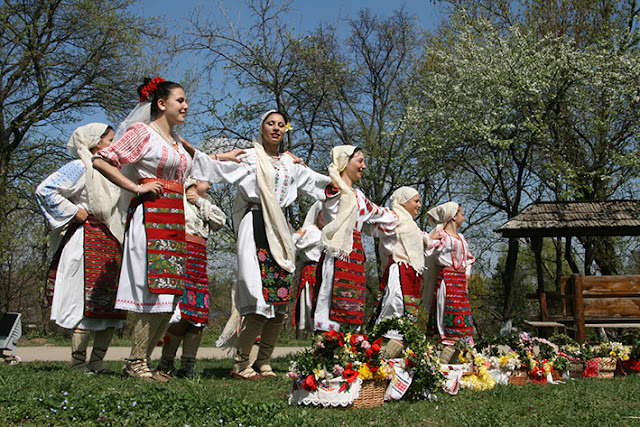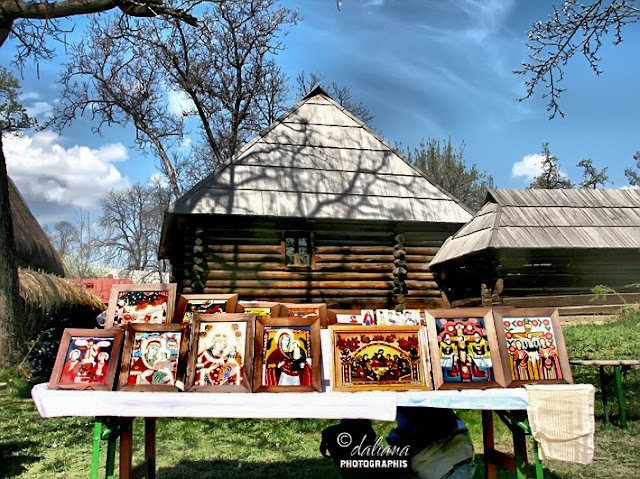Nu este un loc în care mergi să te uiți la obiecte, să faci câteva
fotografii și să pleci. Muzeul Satului se așază frumos în inima ta și te
face să suferi de dor dacă nu vii, din când în când, să te plimbi pe
ulițele sale, să mângâi ghioceii primăvara, să mai furi câte o cireașă
zâmbăreață, să te lași alinat de mirosul de tei sau să stai pe o laviță
și să-ți închipui că ești în curtea bunicilor. Aici ești pe tărâmul
poveștilor. Pentru că România este un tărâm de poveste, iar un om a avut
geniala idee să adune toate satele românești în Satul de la Șosea:
Dimtrie Gusti. Dimitrie Gusti a gândit Muzeul Satului după ce, în cadrul
Catedrei de Sociologie a Universității București a organizat, între
anii 1925 – 1935, o serie de cercetări interdisciplinare în 600 de sate
din diferite regiuni ale României.
Lucrările au început în martie 1936. A
fost o muncă titanică de amenajare a unui teren în suprafață de 4 500
mp. Proiectul a fost susținut de Fundația Culturală Regală „Principele
Carol”.
Sarcina ridicării satului a fost încredințată lui H.H. Stahl şi lui
Victor Ion Popa (proiectantul). Trebuia sa se țină seama şi de
dezideratul ca să fie un „sat-muzeu”, sinteză a tuturor satelor din
întreaga Românie. Un sat unic, un sat real, cu ulițele, plantațiile,
fântânile, piețele lui.
Muzeul Satului Românesc şi-a deschis porţile la 17 mai 1936. La
deschidere au participat regele Carol al IIlea, membri ai guvernului,
mari personalităţi politice şi din domeniul culturii, primarul
Capitalei, toată elita culturală, politică și religioasă a țării.
În concepţia profesorului Dimitrie Gusti, noul Muzeu al Satului
Românesc era parte componentă a unui Centru de Cercetări Sociale în care
ac-centul urma să fie pus pe om şi pe modul de viaţă tradiţional. La
început, în muzeu au fost aduse familii din zonele de proveniență ale
gospodăriilor. „Istoria Muzeului Național al Satului «Dimitrie Gusti»
este legată de oameni și de magia satului tradițional. Pentru a-l
înțelege trebuie să-i descoperi secretele ascunse, să-l iubești, să
crezi în nemurirea moștenirii culturale, să apreciezi sensibilitatea
creatorilor populari și trăinicia tradiției. Acest muzeu nu se dezvăluie
în toată plenitudinea deodată deoarece, prin natura sa, el te obligă să
lași deoparte ideile preconcepute privind vizita într-un muzeu
etnologic obișnuit”, ne spune conf. univ. dr. Paula Popoiu, managerul
Muzeul Național al Satului „Dimitrie Gusti”.
sursa http://www.evz.ro/taramul-de-basm-din-inima-capitalei-muzeul-satului.html
The Village Museum, lying on the Herăstrău lake shore in Bucharest, is one of the biggest and the oldest outdoors museum in Europe.
In the 1930's, in Europe there were only two open-air museums: The Skansen Museum in Stockholm (1891) and Bigdo Museum in Lillehamer (Norway). In our country, at that time, existed the Ethnographic Museum of Transylvania
in the Hoia Park in Cluj, founded in 1929 by Professor Romulus Vuia. In
Romania, the idea of creating an outdoor museum appeared since the
second half of the nineteenth century: Alexander Odobescu proposed the
presentation in the Universal Exhibition in Paris, in a special pavilion, of monuments of popular architecture.
The creation of the National Village Museum was the goal of an intensive
and sustained research, also as museography experiments developed over
more than a decade, coordinated by Dimitrie Gusti, founder of the Sociological School of Bucharest. As head of the Sociological Department of the University of Bucharest,
Gusti organized between 1925-1935, with specialists in different fields
(sociologists, ethnographers, folklorist, geographers, statisticians,
physicians) and his students, research campaign with interdisciplinary
nature, in a relatively large number of villages. At the end of those
campaigns were organized, with items brought from the field, two major
exhibitions in 1934 and 1935, as a prelude to the future open-air museum
in Bucharest.
Based on these experiences, in 1936, in only two months, Gusti could
build the outstanding National Village Museum. In that short time, teams
of specialists and students (the same who participated in field
campaigns), led by Professors D. Gusti and H.H. Stahl, purchased from
studied villages buildings (houses, household annexes, churches, plant)
and indoor objects (furniture, ceramics, fabrics, tools,
etc.),considered as representative for their places of origin. In
compliance with the criterion of authenticity and the respect for local
traditions of construction, the buildings were reconstructed by
craftsmen from the origin villages of the monuments, who worked under
supervision of the specialists Henry H. Stahl and Victor Ion Popa. The
official opening was on May 10, 1936, in the presence of King Carol II
and for the public a week later, on May 17. sursa http://surprising-romania.blogspot.ro/2010/01/village-museum-bucharest.html




















































